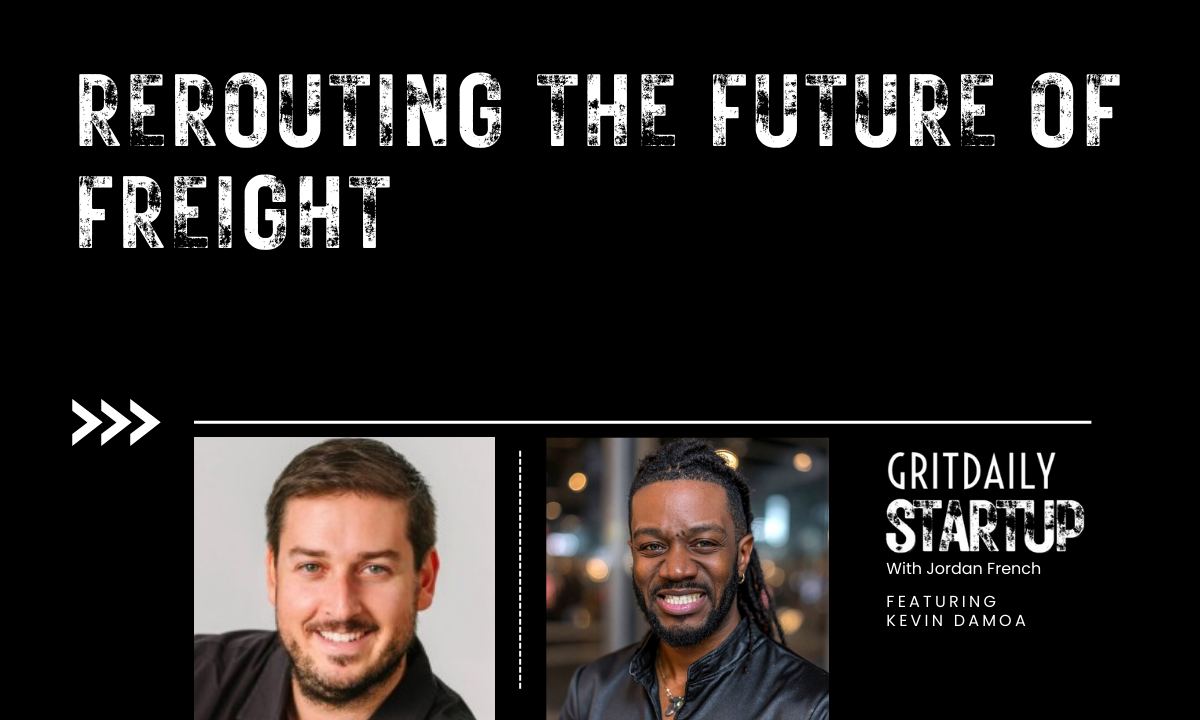When most of us think about logistics, we picture a jam-packed freeway, a shipping port buzzing with cranes, or maybe an overworked delivery driver hustling through a neighborhood. Kevin Damoa sees empty rail lines quietly holding the potential to fix it all.
As founder and CEO of Glid, Damoa is reimagining freight transport, not by replacing trucks, but by making rail viable in places it’s long been overlooked. Speaking with Grit Daily Startup Show host Jordan French, he laid out a bold, surprisingly pragmatic vision: turn underutilized rail into a smart, accessible backbone for the entire supply chain.
Rail, Reinvented for the 21st Century
Glid’s flagship technology, called “gliders,” isn’t just about hauling cargo. These semi-autonomous vehicles combine road and rail capabilities, enabling seamless movement across modalities. They don’t need a transload station or massive crane logistics. A glider can be loaded directly from portside cranes, roll itself onto the tracks, and head off without waiting for a two-mile freight train to form. That kind of speed could mean hundreds of containers moving in the time it currently takes one traditional train to depart.
The company’s first real-world test will begin in Mendocino County, California, where it will move over a million tons of aggregate between Willets and Fort Bragg. That pilot is already underway, with vehicles in production and scheduled to deploy later this year.
For the Mendocino Railway and its historic Skunk Train, it’s a potential game-changer, not just for cargo, but for local economic growth. For Damoa, it’s personal. A veteran of military logistics, former firefighter, and engineer with stints at SpaceX and Harley-Davidson, he’s spent decades watching freight systems bottleneck under their own outdated infrastructure. COVID only exposed how fragile the global chain really is.
Building the Middle Mile and Cutting Out the Waste
Damoa emphasizes that Glid isn’t trying to compete with legacy logistics giants. It’s aiming to fill the gaping inefficiencies they’ve left behind. Most freight systems today are optimized locally — better trucks, better ports, better individual links in the chain. Glid’s approach is systemic. By targeting the “first” and “middle mile,” it aims to eliminate the unnecessary handoffs, delays, and infrastructure friction that jack up costs and emissions.
It’s not uncommon, Damoa notes, for a single heavy product — say, an oven — to be touched 25 to 50 times before reaching its destination. Glid can cut that down to five. Fewer touches, fewer hands, less congestion, and fewer emissions. And with built-in sensor fusion technology (using lidar, radar, and computer vision), gliders also double as mobile inspection units, flagging track problems in real time, helping rail operators avoid derailments and save on insurance.
In an industry that experiences an average of three derailments a day in the U.S., that safety feature alone could be worth billions.
A Mission Bigger Than Freight
It would be easy to cast Glid as just another smart logistics startup. But Damoa isn’t interested in becoming the next FedEx. His ambitions are larger and more grounded in community.
Ports and rail lines, he points out, often sit next to marginalized neighborhoods that bear the brunt of pollution and health risks. Any efficiency gains from his technology, he insists, must also mean a healthier, more equitable world. That mission isn’t negotiable. Any potential acquisition or strategic partner, whether from the Amazon, Union Pacific, or Caterpillar set, must share it.
That hasn’t stopped investors from lining up. Glid is backed by Antler, Draper Associates, and the Veterans Fund, with its seed round still open. But even more than capital, Damoa is looking for vision. He believes this hybrid rail-road model could evolve into a truly multimodal future, where air, road, water, and even nuclear energy-powered gliders converge into a seamless, sustainable network.
A Tipping Point Moment
With vehicles rolling out in Q3 and a real-world pilot already in motion, Glid is no longer a concept — it’s an on-the-ground effort to redefine how goods move. The company’s ambitions may sound futuristic, but its value proposition is crystal clear: less congestion, faster delivery, fewer emissions, and safer infrastructure.
Damoa likes to say, “Don’t ship it. Glid it.” And if he’s right about the timing — if the convergence of technologies, environmental urgency, and logistical pressure really has opened a new window — then 2025 may be remembered not just for AI and rockets, but for a quieter revolution riding steel rails beneath our feet.
Want more Grit Daily Startup Show? Take a look at past articles, head over to YouTube, or listen on Apple Podcasts or Spotify.








